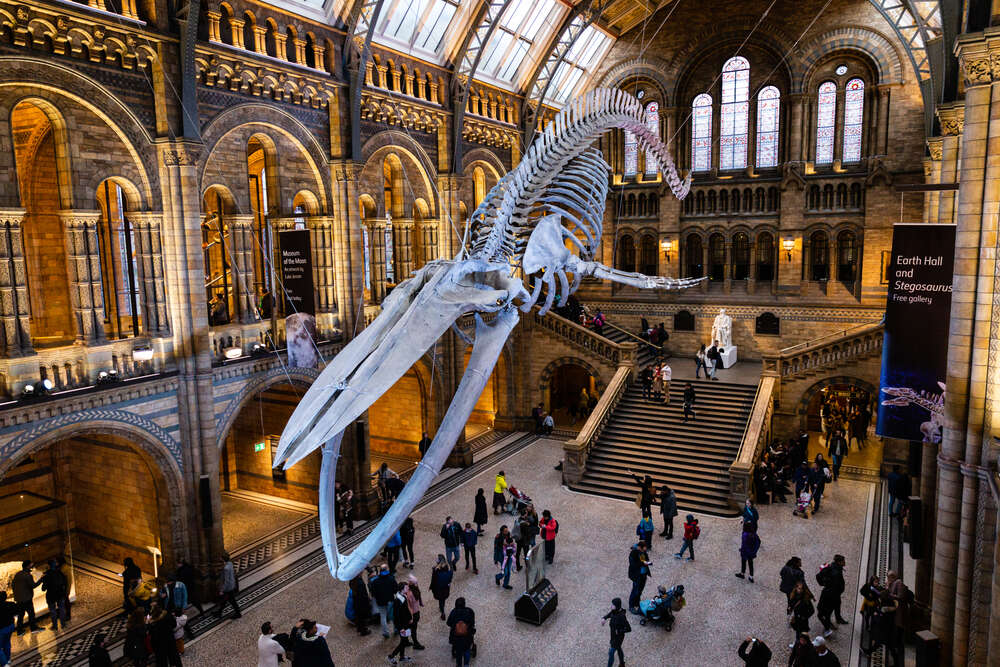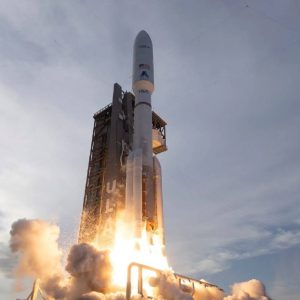
When it comes to ecosystems, staff at the Natural History Museum in London are typically more interested in those which sustain biodiversity in the world around us. But the museum’s tech team is currently working with AWS on a cloud-based ecosystem which will bring together UK environmental data on one platform to help scientists with their research.

On Monday, the Natural History Museum announced a new digital partnership with AWS, Amazon’s public cloud platform, which it hopes will help transform the Museum’s scientific research and community science capabilities, and build a greater understanding of the UK’s biodiversity and environment. There will be a particular focus on the UK’s urban biodiversity, including its composition, how it relates to environmental conditions, and how it responds to direct conservation action.
“Working with AWS to develop the Data Ecosystem will revolutionise the scientific work we undertake at the museum,” said Dr John Tweddle, head of the Angela Marmont Centre for UK Biodiversity at the Natural History Museum. “The data will form an essential tool in unlocking new solutions to the planetary ecological emergency; from monitoring the UK’s wildlife to furthering science-informed nature recovery in our towns and cities.”
Tech Monitor spoke to Richard Hinton, CIO at the Natural History Museum, to find out more about the project.
Natural History Museum digital strategy coming to fruition
Hinton assumed the CIO post full-time in July, having covered the role on a temporary basis since March. He leads a tech team of 60 providing support to the Natural History Museum’s 900 staff. “We cover everything from network and cloud, business analysis, [to] cloud and information records management, and interface with other digital teams such as informatics in science and our digital media team,” he says. “There are digital competencies across the museum, but enterprise level is my responsibility.”
Digital is an essential part of the visitor experience for the five million people who come to the Natural History Museum every year. It also plays a key role for staff, including the 350 scientists who are based at the museum and conduct environmental research.
For Hinton, this means the museum has to be “digital by default” when it comes to taking on new projects. “Our museum strategy for the next ten years has five pillars around how we do research and engage with people,” he says. “When it comes to all these ambitions, it’s clear that technology will be a key enabler, whether that’s in digital delivery, data services or just the plain IT infrastructure.
“This means we have to be digital by default, so when I look at a project I know there will be a tech element, and the challenge is to talk about that and work out the requirements upfront. You’re never short of things to get involved in, and that’s one of the best parts of the job.”
When it comes to the cloud, Hinton says the museum has a mixture of virtual and on-premises infrastructure. “We weren’t early adopters, because at the time we were constrained by skills and resources,” he says. “So where others have gone hell for leather into the cloud, we’ve been able to be more tactical and deliberate, and learn from what other people have been doing. We always advocate for SaaS or PaaS where possible.”
This is becoming easier as more vendors focus solely on SaaS solutions, the CIO says, but the museum is still modernising a number of legacy systems. “One of the key complexities we face is the technical debt and the breadth of things we do,” Hinton explains. “You have to decide to either modernise those old systems or kill them off, because what we want to be doing is… the clever cool stuff like data ecosystem and changing the way we do research and engage with people, not having to look after the ‘tin’, as we have in the past.”
He adds: “When I started, you had some of those cliché things of people going out and buying tech solutions and then only involving IT later in the process – you end up trying to connect things with string and yoghurt pots.
“But you can’t sustain that complexity with a small organisation, and I think over the years we’ve definitely matured and are a lot more joined up in terms of thinking about how we reuse and share services.”
How the Data Ecosystem will change the Natural History Museum’s research
The Data Ecosystem promises to be one of the biggest shared services built by the museum so far. It will be open to scientists at the museum, as well as those based at its partner institutes across the UK. The aim is to help researchers build a deeper understanding of the UK’s urban biodiversity, including its composition, how it relates to environmental conditions, and how it responds to direct conservation action.
Hinton explained that the platform came about as part of the Urban Nature Project, a public outreach programme which involves the museum working with cities around the UK to help protect and grow their natural environments.
“We’ve done a lot of individual community projects before where the public do observations and submit information, and we’ve separately done things where we collect data directly from devices and sensors and send that to a lab,” he says. “But we’ve never done something like this. We wanted to build something where we bring all that data together coherently in one place so that it’s easily searchable.”
The platform will allow scientists to collate datasets from a specific city or urban area so that they can view the wider context for their research and the biodiversity in that area. “You might have a DNA sample from the ground or water, and you’ll be able to cross-reference that with what people have seen or heard in their gardens in that time,” Hinton explains. “You’ll also be able to look at local weather station data, so you’ve got context of what light and temperature conditions were like. It enables you to build a ‘digital twin’ of the environment.”
Hosting the ecosystem in the cloud will enable the museum to easily scale it up as it grows, potentially making it available to other research institutions, Hinton says. It has been in iterative delivery since August, and Hinton hopes to have a minimum viable product in operation early next year.
“It’s been a voyage of discovery,” says Hinton. “What’s been particularly amazing is putting a subject expert with a tech expert – if you can get them speaking the same language that’s when the magic happens, and it’s been inspiring to see them getting down to brass tacks and discussing what’s needed to deliver outcomes for scientists.”
Natural History Museum’s AWS-powered garden
The UNP will also see the museum’s gardens transformed, with an onsite learning and activity centre to host science activities, powered by AWS. The UNP gardens will provide ‘living galleries’ within which museum scientists can develop and test new methods to monitor, protect and enrich the urban nature that is so important to human wellbeing.

Visual and environmental DNA-based observations of plants and wildlife, as well as environmental and acoustic monitoring data from a high spatial resolution sensor network in the museum’s gardens, will be curated and made available within the Data Ecosystem. This will enable the museum’s scientists to build scientific evidence of the impacts that habitat creation, restoration, and translocation have on the UK’s urban wildlife, from grassland to pond habitats. The gardens will be open to the public next year.






